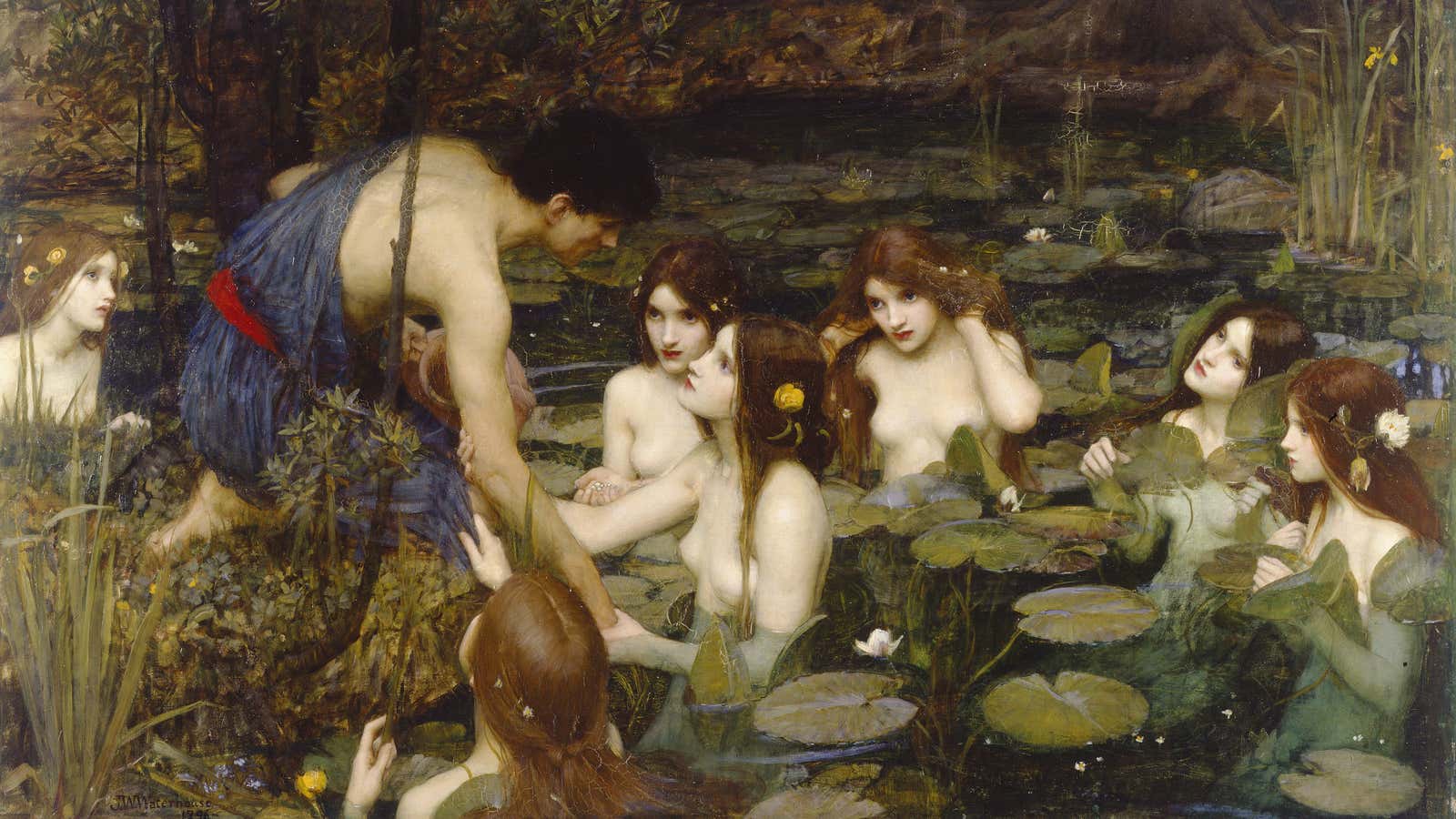A British museum is using Post-its as provocation.
The publicly owned Manchester Art Gallery, best known for its 19th-century British paintings, is hoping to make a statement about the male gaze through the absence of an artwork. On Jan. 26, the museum allowed John William Waterhouse’s “Hylas and the Nymphs” to be removed from the spot it’s held since 2002, as part of a work by artist Sonia Boyce, for an exhibition opening in March.
The 1896 painting depicts the myth of Hylas, the adored companion of Heracles (better known by his Roman name, Hercules), who disappeared after he was dragged into a spring by nymphs. The museum declined to comment on whether this painting is often the subject of complaints about the female form in art.
In place of the pre-Raphaelite painting, the wall now has a printed sign asking gallery-goers to start a “conversation about how we display art and interpret artworks in Manchester’s public collection.” According to an image of the space on Instagram, the post-its are about as thought-provoking as one would expect in online comments, with responses like “pls put painting back, ty,” “DANGEROUS DEPRESSING,” “I agree –>,” and just “#timesup.”
The Gallery’s action stands in sharp contrast to the response this past December to a petition for the New York’s Metropolitan Museum of Art to take down Balthus’s “Thérèse Dreaming,” which depicts a stretched out 11-year-old girl: The museum flatly refused. “Visual art is one of the most significant means we have for reflecting on both the past and the present,” the museum said in a statement then, “And encouraging the continuing evolution of existing culture through informed discussion and respect for creative expression.”
It’s not clear that the Manchester museum’s blank wall, without any context about the missing painting, has led to effective discourse about outmoded depictions of women. But it has unintentionally prompted criticism, of varying quality, that the removal constitutes censorship. In comments on the site’s blog, one person wrote, “Instead of trying to ignore history, why not focus on positive portrayal of women (and men) relative to our modern values. Why not use such artists as Sylvia Sleigh (‘At the Turkish Baths’) to present an counter-offering?” Another person with opinions wrote, “Sorry, I’m done with feminism from now on.”
But the museum insists it’s not trying to erase or ignore culture. “The temporary removal of the painting is not about censorship,” insists Clare Gannaway, the museum’s curator of contemporary art, in a prepared statement. “Rather it is about opening up space for debate and discussion about the gallery collection and questions of representation.”
